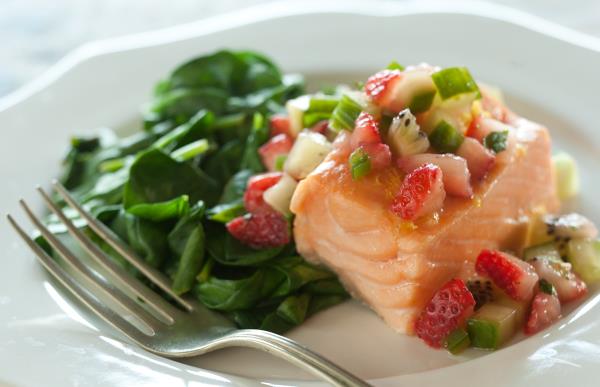
Is Farmed Seafood Safe to Eat?

(StatePoint) There are plenty of fish in the sea, so its important to know which are safe to put on your plate. Farmed seafood can serve up a variety of benefits — affordability, year-round availability and great taste.
If youve heard negative press about farmed seafood, you may have questions. Before passing on farmed seafood at the supermarket, take the time to learn the truth about some common myths. Myth: Fish farming is bad.Fact: Farming seafood can provide a consistent, high-quality, year-round supply of healthy, flavorful protein. When done right, aquaculturewild-caught seafood. Avoid seafood raised with poor farming practices that cause water pollution and overuse chemicals and antibiotics. Ask your fishmonger for specifics on where their seafood comes from. Be careful if they cannot provide details. Myth: Farmed fish is raised with antibiotics and hormones.Fact: There are ways to avoid this, so ask questions. David Pilat, global seafood buyer for Whole Foods Market, recommends asking your fishmonger if farmed fish was fed a nutritious diet without antibiotics, pesticides or added growth hormones, which are prohibited at the companys stores. Ideally, fish farms should be audited annually by third parties to ensure requirements are met. Myth: Fish farming is bad for the environment.Fact: Progressive fish farms do their part to minimize environmental impact by protecting such sensitive habitats as mangrove forests and wetlands, monitoring water quality to prevent pollution, and sourcing feed ingredients responsibly. Myth: Farmed salmon are kept in crowded pens.Fact: Any fishmonger worth their (sea) salt can tell you how the fish they sell was raised. Carefully monitored environments that are best suited to each species can help avoid issues such as pollution, disease and cramped conditions.After arming yourself with the facts, consider this recipe for Baked Salmon with Spinach and Strawberry Salsa: 4 (3-ounce) salmon fillets, skin removed 1 teaspoon lemon zest 1 pound strawberries, diced 2 kiwifruits, peeled and diced 1 cucumber, diced 1 jalapeño, seeded and minced 2 tablespoons chopped fresh mint leaves 2 tablespoons fresh lemon juice, divided 1 pound baby spinach leaves, rinsed but not dried Preheat oven to 350 degrees F. Place salmon on a baking sheet and sprinkle with lemon zest. Bake 15 to 18 minutes or until cooked through. Place strawberries, kiwi, cucumber, jalapeño, mint and 1 tablespoon lemon juice in a medium bowl and toss until combined. Set aside. Heat a large, high-sided skillet over medium heat. Add spinach, with water still clinging to leaves, cover and cook 5 minutes or until wilted, stirring occasionally. Stir in remaining lemon juice. Divide spinach among plates. Top with salmon and salsa and serve.For more information on farmed seafood, visit www.WholeFoodsMarket.com.Get the facts — know where farmed fish swam, what it was fed, and more importantly, what it wasn’t fed! With many wild species declining, farmed seafood can be an excellent, affordable and tasty alternative if you ask the right questions.
Leave a Comment
Leave a Comment


